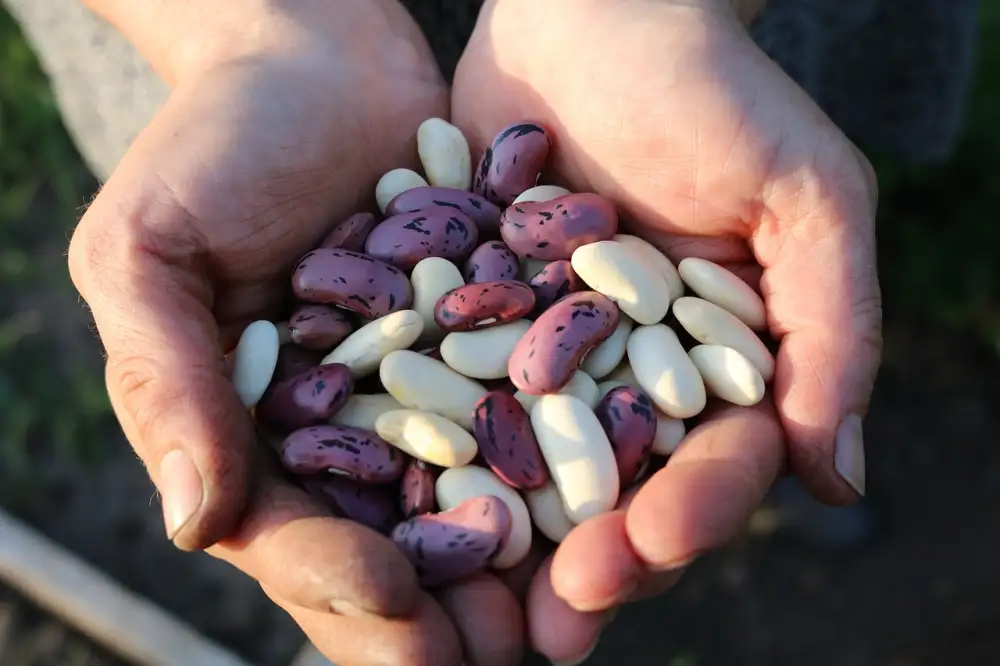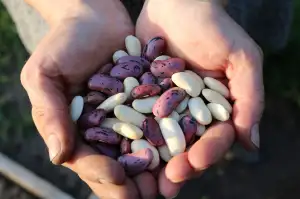Homegrown Delight: Elevate Your Cooking with Fresh Runner Beans

Runner beans, also known as string beans or pole beans, are a popular vegetable in many cuisines around the world. These vibrant green pods are a great source of vitamins and minerals, including vitamin C, vitamin K, and manganese. They are low in calories and high in fiber, making them a nutritious addition to any diet. Runner beans have a slightly sweet and nutty flavor that pairs well with a variety of dishes. Whether steamed, stir-fried, or roasted, runner beans add a delicious crunch to your meals. Stay tuned to discover the health benefits of these versatile legumes!
Health Benefits of Runner Beans
Runner beans are not only delicious but also packed with health benefits. They are a great source of fiber, which aids in digestion and helps maintain a healthy gut. Additionally, runner beans are rich in vitamins such as vitamin C, K, and A, as well as minerals like iron and manganese. These nutrients contribute to overall immune function, bone health, and energy production in the body. Furthermore, runner beans contain antioxidants that help reduce inflammation and protect cells from damage caused by free radicals. Incorporating runner beans into your diet can support your overall health and well-being.
How to Grow Runner Beans in Your Home Garden
Growing runner beans in your home garden is a rewarding experience that can elevate your cooking with fresh and flavorful produce. Here are some steps to successfully grow runner beans:
1. **Choose the Right Location**: Select a sunny spot with well-drained soil for planting runner beans.
2. **Prepare the Soil**: Ensure the soil is rich in organic matter and has a pH level of around 6.0-7.0.
3. **Planting**: Sow seeds directly into the ground after the last frost date, spacing them about 8-10 inches apart in rows or in mounds.
4. **Support Structures**: Runner beans are climbers, so provide trellises, stakes, or other support structures for them to climb as they grow.
5. **Watering and Care**: Keep the soil consistently moist but not waterlogged. Mulching can help retain moisture and suppress weeds.
6. **Fertilization**: Fertilize with a balanced fertilizer once the plants start flowering to promote healthy growth and abundant bean production.
7. **Harvesting**: Pick runner beans when they are young and tender, typically around 6-8 inches long, to ensure the best flavor and texture.
By following these steps and providing proper care, you can enjoy a bountiful harvest of runner beans from your home garden to enhance your culinary creations with freshness and quality.
Delicious Recipes Using Runner Beans
Runner beans are a versatile ingredient that can be used in a variety of dishes to add flavor and texture. One popular way to enjoy runner beans is by making a simple stir-fry with garlic, ginger, and soy sauce. You can also toss blanched runner beans with cherry tomatoes, feta cheese, and a balsamic vinaigrette for a refreshing summer salad. Another delicious option is to roast runner beans with olive oil, salt, and pepper until they are crispy and caramelized. Additionally, you can incorporate runner beans into pasta dishes, curries, or even as a topping for homemade pizzas. Experimenting with different recipes will help you discover new ways to elevate your cooking with fresh runner beans.
Tips for Harvesting and Storing Runner Beans
When it comes to harvesting runner beans, it's best to pick them when they are young and tender for the most flavor. Harvesting regularly encourages more bean production. Gently snap or cut the beans from the plant to avoid damaging it. Store freshly picked runner beans in a perforated plastic bag in the refrigerator crisper drawer for up to one week. To freeze runner beans, blanch them in boiling water for 2-3 minutes, then plunge them into ice water before draining and freezing in airtight containers for up to 6 months. Properly harvested and stored runner beans will maintain their freshness and flavor for future use in your culinary creations.
Incorporating runner beans into your home cooking can elevate the flavor and nutritional value of your dishes. Their versatility allows for a wide range of culinary creations, from salads and stir-fries to soups and casseroles. By adding runner beans to your meals, you not only enhance the taste but also boost your intake of essential nutrients like fiber, vitamins C and K, and folate. Whether you grow them in your own garden or purchase them fresh from local markets, runner beans are a delightful addition to any kitchen. So why not start experimenting with these vibrant legumes today and experience the delicious difference they can make in your cooking!
Published: 01. 04. 2024
Category: Home



